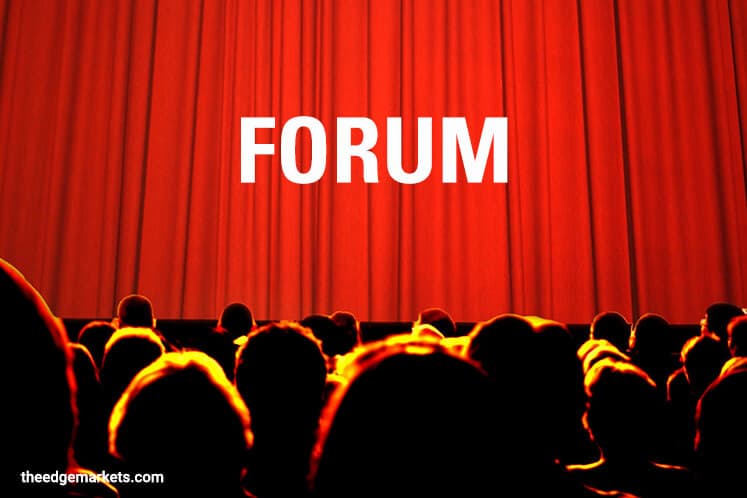
This article first appeared in Forum, The Edge Malaysia Weekly on July 10, 2017 - July 16, 2017
The Internet of Things (IoT) is starting to transform the way we live but is it changing the way we do business as much as it should?
In the last decade, the introduction of connected technologies has changed our lives. Across all manner of physical objects, sensors are being embedded that can track and share information, self-optimise and learn how to perform better — with or without human intervention.
Connected devices and IoT will increasingly have a major impact on the way the world works. The GE Foundation predicts that the collision of machines, data and analytics will result in a US$200 billion global industry by this year.
In a world where IoT devices are pervasive and connected, many aspects of our lifestyles will be transformed. And with each new lifestyle or behavioural change, new, as yet unimagined, consumer needs will arise, opening new doors for businesses to meet those needs.
The challenge for the C-suite
For the hard-pressed members of the C-suite, it can be difficult to imagine the future possibilities created by IoT. They comprehend the need to innovate and pave the way in their organisations for the adoption of new technologies. But then, they have to rely on and enable their people to bring forth new ideas to create the breakthrough results.
Millennials entering the workforce can be an important resource for companies because this group quickly grasps digital concepts and can re-imagine how work could be done. Increasingly, we see younger managers leading “innovation challenges” in their organisations to rapidly tap the art of the possible around the emerging technologies.
It could be argued that middle management has the most difficult position in the face of this challenge; they understand the strategic shift towards disruption for growth but are busy running the current business and would have spent a great deal of their career working on cost-reduction or efficiency programmes.
A new type of leadership is required that demands disruption, creativity, innovation and a growth mindset. Middle management sets the day-to-day pace of an organisation and is therefore an essential part of any strategic imperative in it. Strong change management is important to enable this critical group to lead the charge. Probably the biggest signal a CEO can give is to start using words like “experimentation”. To effect the right change, it is critical to cultivate human capabilities and foster “productive collisions” and interactive cross-functional conversations. The C-suite can create an environment where experimentation in new technologies is encouraged, where trying and failing fast is allowed and even rewarded.
Making the business case for IoT
Of all the reasons why IoT has yet to fully enacted by the boardroom, the inability to clearly define the breakthrough value it can bring to the business is perhaps the biggest.
Many organisations still struggle to understand how to apply technologies like IoT to cause disruption and create meaningful and sustainable new business models.
We can already see the new normal that comes with IoT-enabled platforms, such as driverless cars, personal fitness monitors and connected homes. Consumer IoT is driving the growth agenda, opening up new markets for connected products and services, changing how we live in ways that would have been unimaginable even five years ago in most societies.
What is less obvious but creates great financial opportunity for business is industrial IoT — where connecting machinery involved in behind-the-scenes processes can create tangible and substantial business benefits. Industrial IoT is already dramatically improving manufacturing efficiency through supply chain asset tracking, real-time energy use and predictive maintenance, which monitors equipment parts to determine which are starting to falter so they can be fixed long before they fail.
IoT delivers on both the growth and efficiency agendas in different parts of the business. It is about grasping the opportunities to create new businesses and re-imagining existing ways of working where connected devices, data and people work seamlessly.
Asking the right questions
The real opportunity in IoT is unlikely to lie solely in answering the question as to what IoT is. The opportunity for business leaders lies in coming up with better questions to imagine what their business could be in a world where people, things, data, intelligence and places are connected.
The challenge for many organisations is that they simply do not know how to phrase the question. The right question can provide the necessary focus and drive for the best implementation of IoT, uncovering previously unseen opportunities for potential revenue, higher productivity and cost savings.
In manufacturing, asking a targeted question, such as “Can you improve the prediction accuracy of our wind power generation?”, can yield more fruitful decisions than “How can we use IoT to manage resources and save money?”
Albert Einstein once remarked that if he had an hour to solve a problem and his life depended on finding the solution, he would spend the first 55 minutes determining the proper line of enquiry. Once he knew how to state the question, the answer would follow in the remaining five minutes.
Chow Sang Hoe is the managing partner of advisory services at Ernst & Young Advisory Services Sdn Bhd. The views in this article are those of the author and do not necessarily reflect the views of the global EY organisation or its member firms.
Save by subscribing to us for your print and/or digital copy.
P/S: The Edge is also available on Apple's AppStore and Androids' Google Play.